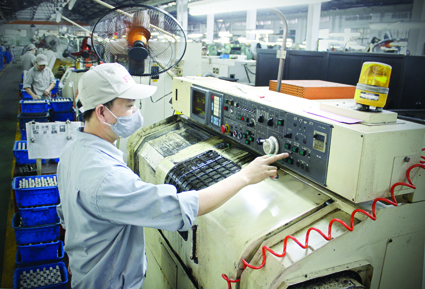Under Prime Minister Decision No. 1168/QD-TTg of July 16, issuing the strategy for Vietnam’s automobile industry development through 2025, with a vision toward 2035, Vietnam will prioritize the manufacture of trucks and passenger cars of 10 seats or more, passenger cars of up to 9 seats and special-use vehicles.

Photo: Tran Viet/VNA
Its overall objective is to build Vietnam’s automobile industry into a key industry meeting the domestic market demands for various types of vehicles and capable of export, thus creating a motive force to promote the development of other industries and raising competitiveness of the country to become a supplier of components and parts in the world’s automobile manufacturing chain.
Small and multi-utility vans for agricultural use and transportation in rural and mountainous areas are also encouraged.
The support-industries enterprises for automobile manufacture will apply advanced technologies and enter into partnership with leading manufacturers in the world in order to supply auto components and parts.
By 2020, 2025 and 2035, the support industries will meet 35 and over 65 percent of the demand for localized components and parts, respectively.
The strategy also targets the export of around 20,000 locally made cars by 2020; 37,000 by 2025; and 90,000 by 2035.
The strategy underscores the need to boost linkages and cooperation among automobile manufacturers and assemblers, enterprises engaged in support industries, and research and training centers in all economic sectors.
On July 24, the Prime Minister also ratified the master plan on Vietnam’s automobile industry development through 2020, with a vision toward 2030.
Under the master plan, by 2020, Vietnam will be able to manufacture 227,000 automobiles and become a supplier of components and parts in the world’s automobile manufacturing chain.
By 2020, cars of up to 9 seats will meet 60 percent of the domestic demand; cars of 10 or more seats, 90 percent; trucks, 75 percent; and special-use vehicles, 15 percent.
To achieve these goals, the master plan introduces a number of key mechanisms and policies to provide automobile manufacturers with access to preferential credit and incentives.
Special attention will be paid to the consistency and stability of policies on automobile industry development for at least 10 years in order to build confidence of consumers and manufacturers as a premise for investment activities.-



